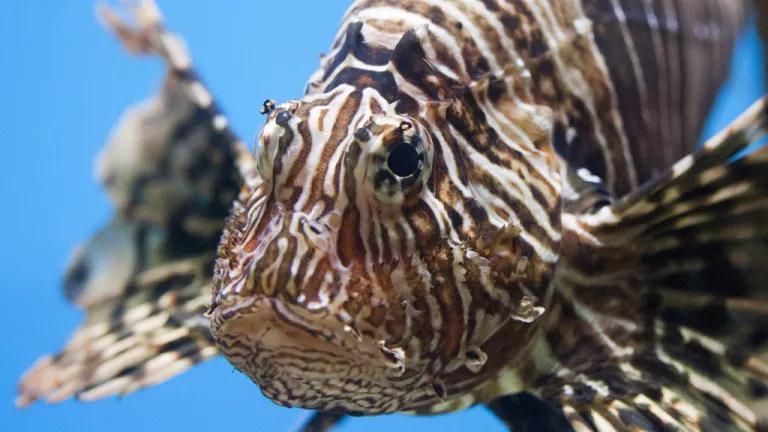Evolutionary Imbalance Hypothesis: An Alien Theory
What regions produce more invasive species, and which are most vulnerable? Biodiversity may be the key.

Evolutionary Imbalance Hypothesis (n.): a theory predicting that diverse ecosystems are most likely to produce successful invasive species
Charles Darwin loved competition. He thought competition for food and mates forced every species to up its game. Hummingbirds learned to hover in midair. Geckos grew sticky feet. Hippos invented their own sunscreen. Humans got really smart. (Well, not all of us.)
But if an animal evolves to thrive in its native environment—as Darwin proved—how can it be so easy for a foreign invader (lionfish, zebra mussels, yellow crazy ants, and hogs, to name a few) to displace it? Why are some species so much more adaptable than others?
Darwin had an answer, and it comes down to competition. In a sense, he believed that ecosystems themselves were competing. He argued that the largest, most biodiverse ecosystems produced the toughest creatures. By facing constant challenges, he wrote, species in these crowded environments “advanced through natural selection and competition to a higher stage of perfection or dominating power.”
Like so much of Chuck’s work, his ecosystem competition theory is as relevant today as it was in 1859. In a paper published last year, a pair of evolutionary biologists ran with Darwin’s explanation. They call it the “evolutionary imbalance hypothesis.” It’s a simple but powerful idea. Evolution is a series of experiments or challenges that nature presents to species. When it gets hot, species learn to sweat or die out. When trees start growing taller, herbivores grow longer necks. When a toothy predator moves into the neighborhood, its prey develops body armor. The more experiments nature performs on a creature, the more prepared the species becomes for new challenges—like being dropped into a populated foreign environment.
Jason Fridley and Dov Sax, the authors of the recent paper, invented an index to measure this phenomenon. Regions high in “phylogenetic diversity,” as they call it, are more likely to produce successful invasive species and also best prepared to repel invaders from other regions.
This isn’t some ivory tower theory—Fridley and Sax documented the power of the evolutionary imbalance hypothesis in several real-life mass invasions. For example, the opening of the Suez Canal in 1869 connected the Red Sea, which is phylogenetically diverse, with the Mediterranean, which is much less so. After the ribbon-cutting, most of the resulting successful invasions flowed north out of the environmentally challenging Red Sea, while very few invaders moved in the opposite direction.
The evolutionary imbalance hypothesis has important applications. Governments in regions that lack phylogenetic diversity—places like the Mediterranean Sea or small islands like the Galapagos—should devote extra resources to preventing invasive species from getting a foothold. Officials in biodiversity hot spots can be slightly less concerned about invasive species. That’s good news, because conservationists in the Amazon have enough to worry about without kudzu.
This article was originally published on onEarth, which is no longer in publication. onEarth was founded in 1979 as the Amicus Journal, an independent magazine of thought and opinion on the environment. All opinions expressed are those of the authors and do not necessarily reflect the policies or positions of NRDC. This article is available for online republication by news media outlets or nonprofits under these conditions: The writer(s) must be credited with a byline; you must note prominently that the article was originally published by NRDC.org and link to the original; the article cannot be edited (beyond simple things such grammar); you can’t resell the article in any form or grant republishing rights to other outlets; you can’t republish our material wholesale or automatically—you need to select articles individually; you can’t republish the photos or graphics on our site without specific permission; you should drop us a note to let us know when you’ve used one of our articles.

These 5 Animals Would Be Goners Without the Endangered Species Act
Finally, a High Seas Treaty to Protect the World’s Oceans
Can Anything Be Done to Stop Overfishing?